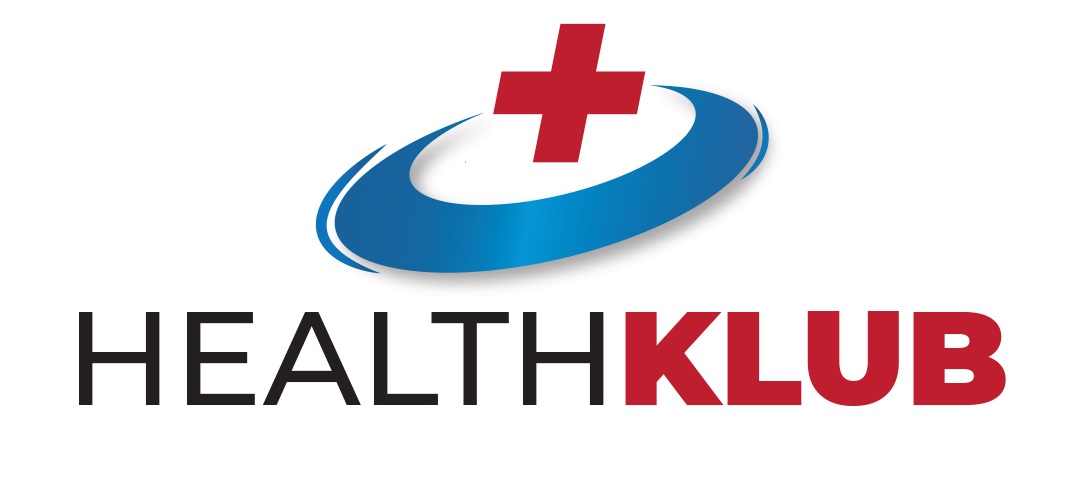Introduction
Headaches are a common ailment that most of us have experienced at some point in our lives. While they can be a nuisance, understanding the different types of headaches and their causes can help you manage and even prevent them more effectively. In this beginner’s guide, we’ll explore the world of headaches, from their types and triggers to coping strategies and prevention.
Types of Headaches
Tension Headaches:
- Tension headaches are the most common type of headache, affecting a significant portion of the population.
- Causes: These headaches are often triggered by stress, anxiety, muscle tension, poor posture, and even eyestrain.
- Characteristics: Tension headaches typically produce a dull, steady, and aching pain that feels like a tight band or pressure around the head. It’s often described as a “band-like” sensation encircling the forehead or the back of the head.
- Duration: They can last from 30 minutes to several days.
- Symptoms: Nausea and light sensitivity are less common with tension headaches compared to migraines.

Migraines:
- Migraines are a neurological condition characterized by severe and often debilitating headaches.
- Causes: The exact causes of migraines are not fully understood, but they can be triggered by various factors, including hormonal changes, certain foods, stress, and environmental factors.
- Characteristics: Migraines are typically described as intense, throbbing pain, often localized to one side of the head. They are often accompanied by other symptoms, such as nausea, vomiting, sensitivity to light (photophobia), and sound (phonophobia).
- Auras: Some individuals experience “auras” before or during a migraine, which are visual disturbances like flashing lights or zigzag lines. Auras can also include neurological symptoms like tingling in the face or hands.
- Duration: Migraines can last for a few hours to several days.
Cluster Headaches:
- Cluster headaches are among the most severe and intense types of headaches and tend to recur in clusters or cycles.
- Causes: The exact cause of cluster headaches is not well understood, but they appear to be related to abnormalities in the hypothalamus.
- Characteristics: Cluster headaches are characterized by sudden and excruciating pain, often around one eye or temple. They are commonly described as “stabbing” or “burning” in nature.
- Cyclical: Cluster headaches occur in clusters, meaning they often happen at the same time of day, even waking individuals from sleep.
- Autonomic Symptoms: Cluster headaches are associated with autonomic symptoms, such as a runny or stuffy nose, tearing of the eye, and drooping eyelids.
- Duration: They are usually shorter in duration than migraines, typically lasting between 15 minutes and three hours.
Common Headache Triggers
Stress:
- Triggers: Emotional or physical stress is a leading trigger for headaches. Stress can lead to muscle tension in the neck, shoulders, and head, increasing the risk of tension headaches. It can also exacerbate the severity and frequency of migraines.
- Mechanism: Stress triggers the release of stress hormones, which can lead to the constriction of blood vessels in the brain, resulting in tension and migraine headaches.
- Coping: Managing stress through relaxation techniques, exercise, and mindfulness can help reduce the likelihood of stress-induced pain in head.

Diet:
- Triggers: Certain foods and dietary factors can contribute to headache development. Common dietary triggers include caffeine, alcohol, aged cheese, monosodium glutamate (MSG), and artificial sweeteners like aspartame.
- Mechanism: Caffeine and alcohol can lead to blood vessel constriction and dilation, which may trigger headaches, especially in sensitive individuals. Tyramine, found in aged cheese, can also contribute to headaches, while MSG and aspartame are known migraine triggers for some people.
- Coping: Identifying your dietary triggers and minimizing their consumption can help prevent diet-related headaches.
Dehydration:
- Triggers: Dehydration, or not drinking enough water, is a common trigger for tension headaches.
- Mechanism: Dehydration can cause a reduction in blood volume and a drop in blood pressure, leading to a decreased flow of blood and oxygen to the brain. This can result in headache symptoms.
- Coping: Staying well-hydrated by drinking an adequate amount of water daily is a simple and effective way to prevent dehydration-related headaches.
Hormonal Changes:
- Triggers: Hormonal fluctuations, such as those experienced during the menstrual cycle, pregnancy, or menopause, can trigger headaches, particularly migraines.
- Mechanism: Hormonal changes can influence blood vessel constriction and dilation and affect brain chemistry, making individuals more susceptible to migraines during these periods.
- Coping: Tracking hormonal fluctuations and working with healthcare professionals to manage hormone-related headaches, such as through birth control options, can be effective in reducing their occurrence.
Coping Strategies
Over-the-Counter Pain Relief:
- Use: Over-the-counter (OTC) pain relievers such as ibuprofen (Advil, Motrin) or acetaminophen (Tylenol) can be effective for mild to moderate headaches. They work by reducing pain and inflammation.
- Considerations: It’s important to follow the recommended dosage and not exceed the daily limits for OTC pain relievers to avoid potential side effects. If headaches persist or worsen, consult a healthcare professional.
Rest and Relaxation:
- Use: Taking a break and finding a quiet, comfortable place to rest can be particularly beneficial for tension-related headaches. Engaging in relaxation techniques like deep breathing, progressive muscle relaxation, or meditation can help ease muscle tension and reduce stress, which are common triggers for these headaches.
- Adequate Sleep: Ensuring you get sufficient and restful sleep is essential for headache management. Irregular sleep patterns or sleep deprivation can exacerbate headaches. Establishing a consistent sleep routine and creating a dark, quiet sleep environment can promote better sleep quality.
Cold Compresses and Heat:
- Cold Compress: Applying a cold compress or ice pack to the forehead or temples can help constrict blood vessels and reduce pain and inflammation during a headache. Wrap the ice pack in a cloth to avoid direct skin contact.
- Heat Compress: For tension-related headaches, a warm compress on the neck and shoulders can relax tense muscles, improving blood circulation and reducing pain. Use a warm, moist towel or a heating pad.
- Safety: Always exercise caution when using temperature-based remedies to avoid frostbite or burns. Limit the application to 15-20 minutes at a time and allow the skin to return to its normal temperature between applications.
In addition to the coping strategies mentioned, it’s worth considering other approaches for managing headaches, such as:
- Hydration: Staying well-hydrated is crucial in preventing dehydration headaches. Make a habit of drinking enough water throughout the day to maintain proper hydration levels.
- Avoiding Triggers: Identifying and avoiding headache triggers, whether they’re related to stress, diet, or lifestyle factors, can be an effective long-term strategy for reducing the frequency and intensity of headaches.
- Regular Exercise: Engaging in regular physical activity can help reduce stress, improve blood flow, and release endorphins, which are natural pain relievers.
- Cognitive Behavioral Therapy (CBT): For individuals with chronic tension or migraine headaches, CBT can be a valuable therapeutic approach. It helps individuals manage stress and develop coping strategies to prevent and alleviate headaches.
Prevention Tips
Stay Hydrated:
- Importance: Proper hydration is fundamental to overall health and can significantly reduce the risk of dehydration headaches. Dehydration can lead to reduced blood flow to the brain and trigger headaches.
- Recommendation: Aim to drink an adequate amount of water throughout the day. The daily water intake can vary from person to person, but a general guideline is to consume around 8 cups (64 ounces) of water daily. Adjust this based on your individual needs, physical activity, and climate.
Maintain a Consistent Sleep Schedule:
- Importance: Irregular sleep patterns, including insufficient sleep or erratic sleep-wake cycles, can trigger headaches in some individuals. Consistency in sleep is crucial for overall health and headache prevention.
- Recommendation: Establish a regular sleep routine by going to bed and waking up at the same times each day, even on weekends. Create a comfortable sleep environment that is dark, quiet, and conducive to restful sleep.
Manage Stress:
- Importance: Stress is a common headache trigger, particularly tension headaches. Managing stress effectively can help reduce the frequency and severity of these headaches.
- Recommendation: Explore stress reduction techniques such as yoga, meditation, deep breathing exercises, mindfulness, or progressive muscle relaxation. These practices can promote relaxation, ease muscle tension, and improve stress management.
Diet and Lifestyle Changes:
- Identify Triggers: Recognize and avoid specific foods or dietary triggers that may lead to headaches. These triggers can vary from person to person but often include caffeine, alcohol, aged cheese, and artificial sweeteners.
- Regular Exercise: Engage in regular physical activity, such as walking, jogging, swimming, or cycling. Exercise releases endorphins, which are natural pain relievers, and can help reduce stress.
- Healthy Eating: Maintain a balanced and nutritious diet, rich in fruits, vegetables, whole grains, and lean proteins. Regular meals and snacks can help stabilize blood sugar levels, preventing diet-related headaches.
- Limit or Avoid Alcohol and Caffeine: For some individuals, alcohol and caffeine can trigger pain in head. Reducing or eliminating their consumption may be beneficial.
Caffeine Management:
- Importance: While moderate caffeine intake can provide relief for some headaches, excessive consumption or abrupt withdrawal can lead to caffeine-induced headaches.
- Recommendation: If you consume caffeine regularly, do so in moderation and maintain a consistent intake pattern. Avoid sudden changes in your caffeine consumption.
Adequate Sleep:
- Importance: In addition to a consistent sleep schedule, ensure that you get enough restful sleep. Sleep deprivation can be a significant headache trigger.
- Recommendation: Aim for 7-9 hours of quality sleep each night, depending on your age and individual needs.
By incorporating these prevention tips into your daily routine, you can reduce the frequency and intensity of pain in head. Remember that individual triggers and responses may vary, so it’s essential to customize your prevention strategies based on your specific headache patterns and needs. If pain in head persist or worsen, seek guidance from a healthcare professional for a tailored treatment plan.
When to Seek Medical Attention
Chronic Headaches:
- Definition: Chronic headaches are those that occur frequently and persist over an extended period. They may be regular occurrences, such as daily or multiple times a week.
- Significance: Chronic headaches can significantly impact your quality of life and may be indicative of an underlying medical condition.
- When to Seek Medical Attention:
-
-
- If you experience frequent or severe pain in head, it’s advisable to consult a healthcare professional. They can perform a thorough evaluation to determine the underlying cause and develop an appropriate treatment plan.
- Keep a headache diary to track the frequency, duration, and intensity of your pain in head, as well as any associated symptoms. This information can be valuable for diagnosis.
-
Sudden Severe Headache:
- Definition: A sudden severe headache is one that comes on abruptly and is exceptionally intense and different from your usual headaches.
- Significance: A sudden severe headache can be a sign of a potentially life-threatening medical condition.
- When to Seek Immediate Medical Attention:
-
- If you experience a sudden, extremely severe headache that is often described as “the worst headache of your life,” you should seek immediate medical attention.
- This type of headache could be indicative of conditions like a ruptured aneurysm, intracranial hemorrhage, or other neurological emergencies. Immediate medical evaluation is critical to assess and address the situation promptly.
-
It’s important to emphasize that while chronic headaches can be distressing, not all are associated with life-threatening conditions. However, seeking medical evaluation for chronic headaches is essential to determine the cause and receive appropriate treatment or management strategies.
On the other hand, a sudden severe headache is a medical emergency that requires immediate attention. Delaying seeking medical help in such cases can have serious consequences, so it’s crucial to prioritize your well-being and safety. If you or someone you know experiences a sudden and severe pain in head, do not hesitate to call for emergency medical assistance or visit the nearest hospital.
Conclusion
Understanding headaches, their types, triggers, and coping strategies is the first step in managing and preventing them. While most headaches can be effectively treated at home, it’s essential to seek medical advice if you experience chronic or severe headaches. With the right knowledge and a proactive approach, you can take control of your headaches and enjoy a more comfortable, headache-free life.


